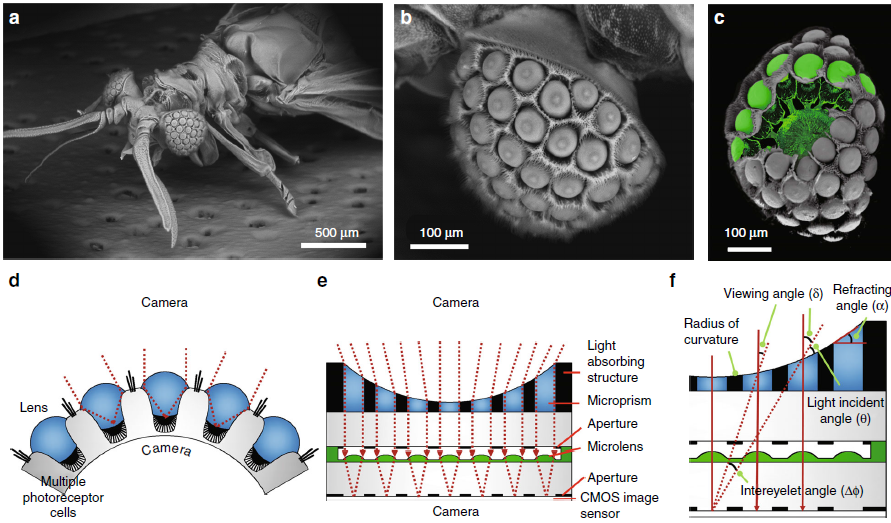Xenos peckii is a parasitic insect that spends much of its life cycle within the body of a host paper wasp, but it's also known for something else – its unusual eye structure. By copying that structure, scientists have created an ultra-slim camera that could allow for the manufacturing of thinner-than-ever smartphones or other imaging devices.
Developed by a team from the Korea Advanced Institute of Science and Technology (KAIST), the prototype camera is just 1.4 mm thick and has a diameter of 3.4 mm. Instead of the usual single stack of lens elements, it consists of an array of microprisms, every one of them sitting above a corresponding microlens.
Each of these prism/lens combos individually channels light to a single underlying CMOS (complementary metal oxide semiconductor) image sensor. All of these light channels are separated from one another by a light-absorbing material which reduces "optical crosstalk" – this is an undesirable phenomenon in which the light signal from one channel interferes with the signal of an adjacent channel.

Ultimately, each prism/lens captures a partial image of the subject, from a slightly different perspective. These partials are digitally combined to form a single wide-angle high-resolution shot of the entire subject.
"We have proposed a novel method of fabricating an ultrathin camera," says lead scientist Prof. Ki-Hun Jeong. "As the first insect-inspired, ultrathin camera that integrates a microcamera on a conventional CMOS image sensor array, our study will have a significant impact in optics and related fields."
A paper on the research was recently published in the journal Light: Science and Applications.
Source: KAIST






